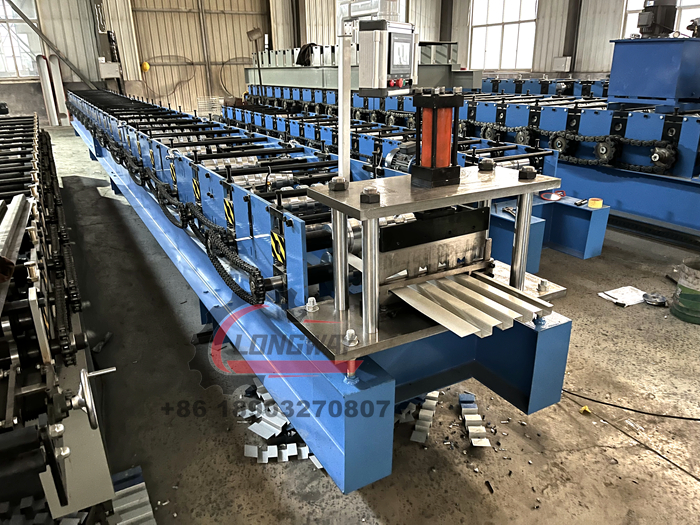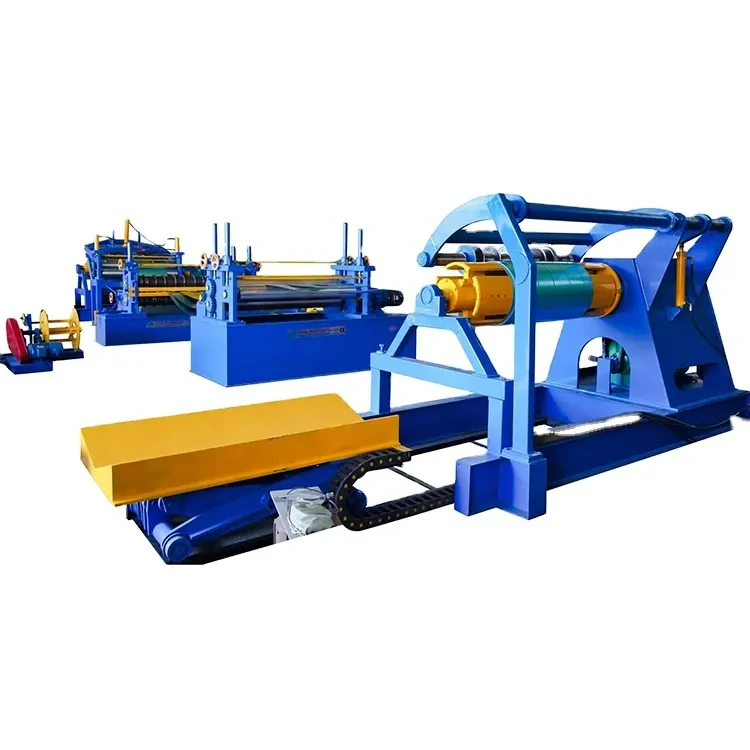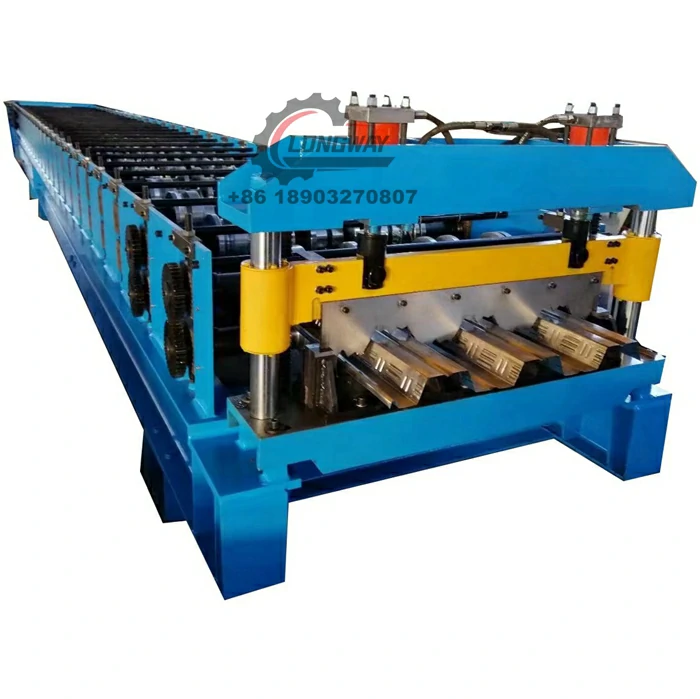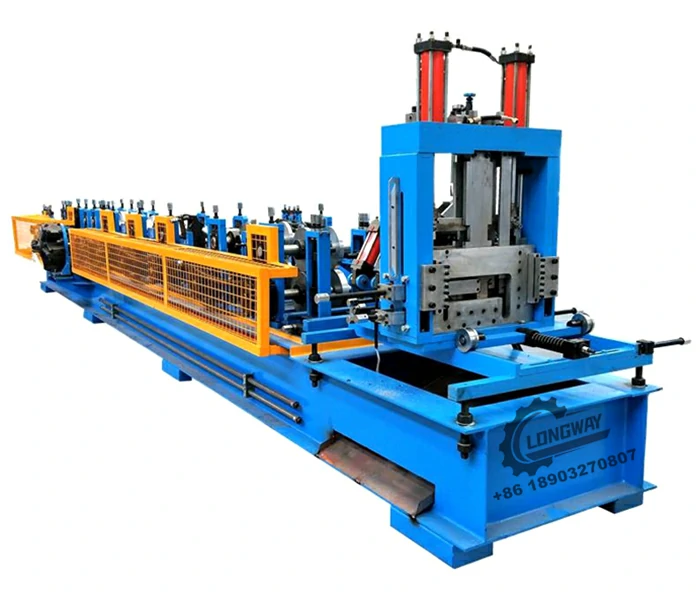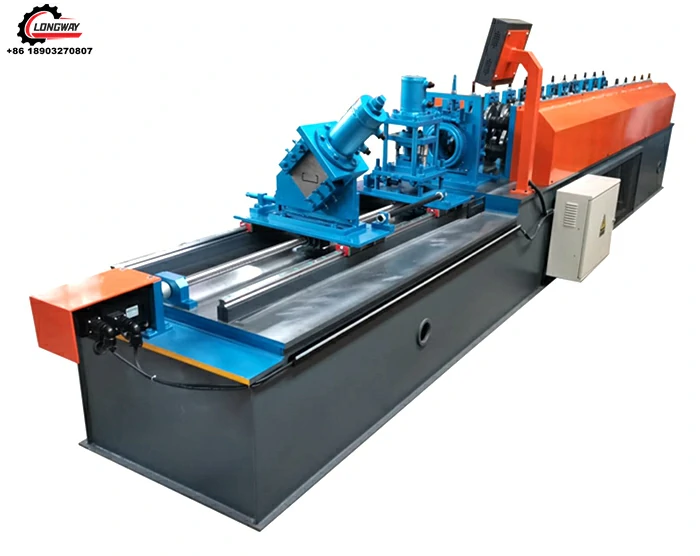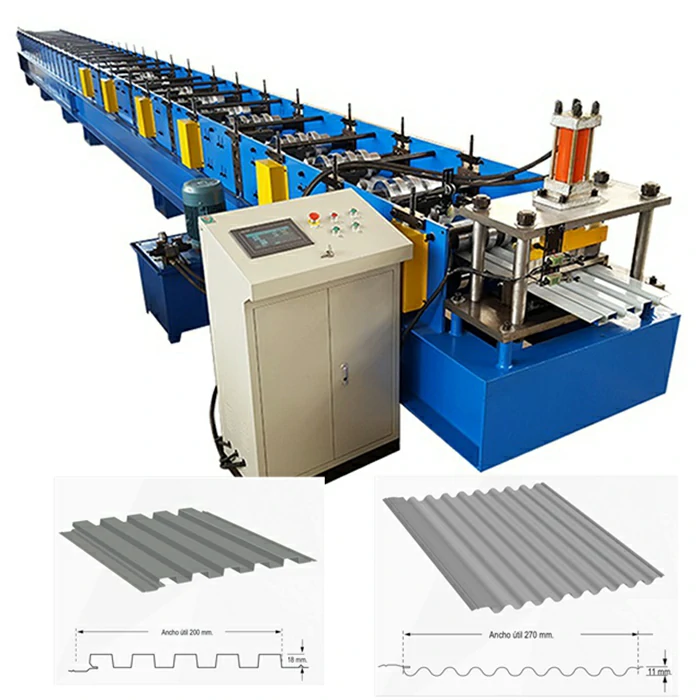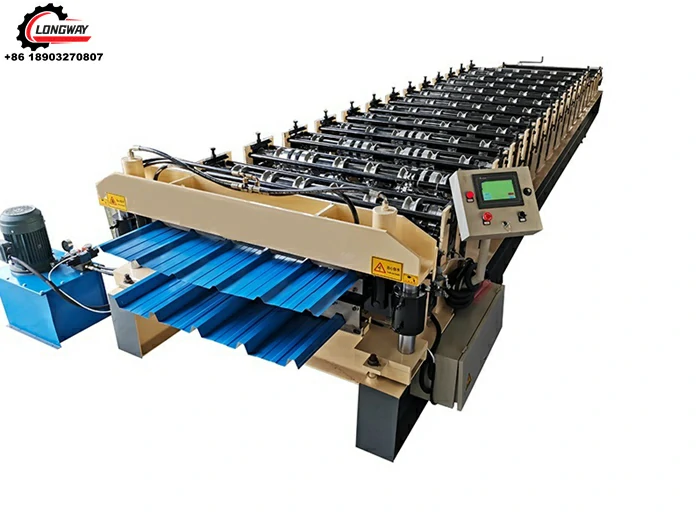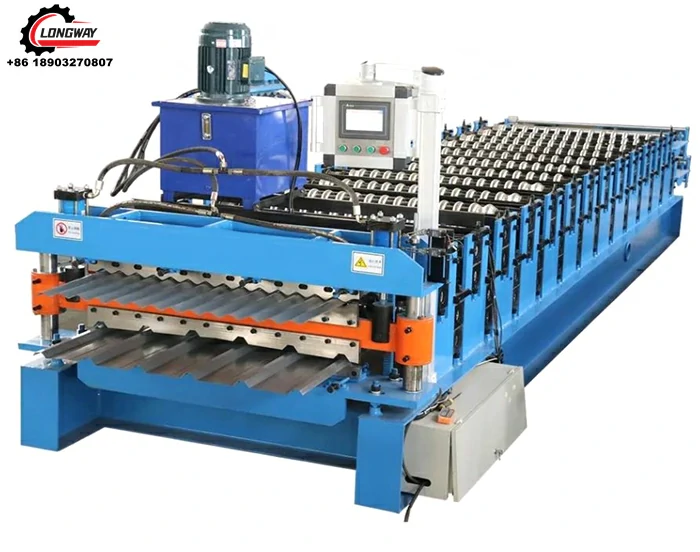WHAT IS ROLL FORMING-Roll Forming Machine
A continuous metal forming process passes a long metal strip through multiple rollers. These rollers are strategically configured to gradually shape the metal into the desired cross-sectional profile. One of the unique aspects of roll forming is that it allows for intricate shapes to be crafted without compromising the metal’s structural integrity.
ADVANTAGES OF ROLL FORMING
HIGH EFFICIENCY
Roll forming is known for its high production efficiency. Roll forming can handle mass production runs relatively easily unlike other metal-forming techniques. Businesses that require large quantities of a specific component stand to benefit considerably.
COST-EFFECTIVENESS
When it comes to roll forming advantages, cost-efficiency is often at the top. The high throughput and low waste production contribute to a cost-effective operation.
MATERIAL VERSATILITY
Roll forming can work with various materials, from aluminum and stainless steel to copper. This allows them to select the most appropriate material for business application needs.
PRECISION AND UNIFORMITY
Roll forming excels in delivering highly precise and uniform products. The multiple roller stations ensure the metal is shaped accurately, resulting in components that meet exact specifications.
CUSTOMIZATION
Custom profiles are easily achievable with roll forming. The process allows intricate designs and patterns to meet specific customer requirements.
ADDITIONAL ROLL FORMING BENEFITS
LOWER LABOUR COSTS
One often overlooked roll forming advantage is the potential for lower labor costs. Given the high degree of automation, roll forming operations usually require fewer operators than other metal fabrication processes. This reduction in manpower can lead to significant labor cost savings.
ENHANCED SURFACE FINISH
Roll forming also allows for an excellent surface finish on the end product. The gradual deformation process minimizes scratches or defects on the metal surface, resulting in a high-quality finish that might eliminate the need for additional treatments or coatings.
SCALABILITY
The scalability of roll forming must be stressed more. Once the initial setup is complete, scaling up production to meet increased demand is straightforward. This makes roll forming a particularly appealing option for businesses looking to grow.
WASTE MINIMIZATION
Another noteworthy roll forming advantage is the process’s ability to minimize material waste. The metal strip is used efficiently, and any offcuts can often be recycled, making roll forming a more sustainable option than other methods.
QUADRO 25X40 Cladding Wall Panel Forming Machine
DISADVANTAGES OF ROLL FORMING
HIGH INITIAL COST
One of the primary roll forming disadvantages is the high initial setup cost. The dies and rollers must be custom-built for each profile, which can be expensive.
LIMITATIONS IN PART COMPLEXITY
Although roll forming can produce a variety of shapes, there are limitations to how complex these shapes can be. Highly intricate or irregular profiles may not be feasible.
LONGER LEAD TIMES
Custom dies, and setups often result in longer lead times. If a project is time-sensitive, this could pose a challenge.
INFLEXIBILITY FOR SHORT RUNS
Roll forming is most cost-effective when applied to large production runs. Short runs or prototype development may be more economical choices.
ADDITIONAL ROLL FORMING LIMITATIONS
ENERGY CONSUMPTION
While discussing roll forming disadvantages, mentioning the energy consumption aspect is crucial. The roll forming process can be energy-intensive, particularly for metals that require significant force for shaping. This could lead to higher operational costs over time.
TOLERANCE ISSUES
Another downside to roll forming is that not all materials can maintain tight tolerances through the forming process. Although the issue can often be mitigated through proper setup and calibration, businesses must be aware.
COMPLEXITY IN POST-FORMING OPERATIONS
After roll forming, specific profiles may require additional operations like piercing, bending, or welding. These operations can add to the complexity and cost of the overall production process.
THE IMPORTANCE OF MATERIAL SELECTION
The roll forming process’s efficiency and quality often depend on the type of material used. For instance, specific steel grades may be more suitable for achieving high levels of precision, while aluminum might be the preferred choice for lightweight applications. The wrong material can lead to defects, increased waste, or even failure of the end product.
APPLICATIONS IN VARIOUS INDUSTRIES
From torque tubes in automotive applications to framing in construction, roll forming plays a crucial role in a wide array of sectors.
For example, torque tubes in automotive applications are often produced using roll forming. These tubes are essential in the drivetrain, transferring torque from the engine to the wheels. The high precision and uniformity provided by roll forming make it an ideal choice for producing these components.
FINAL THOUGHTS!
In the complex world of metal fabrication, roll forming emerges as a versatile and efficient method, widely embraced across industries such as automotive, aerospace, and construction. With its myriad of advantages, such as high efficiency, cost-effectiveness, material versatility, precision, and customization capabilities, roll forming provides businesses with compelling reasons to adopt this method.
The suitable material is crucial in roll forming to maximize benefits and minimize drawbacks. Energy consumption, material tolerance, and post-forming operations are essential considerations. Roll forming is efficient in real-world situations. Whether it’s fabricating torque tubes in the automotive sector or construction elements in large-scale projects, roll forming is an invaluable asset.
-
Deck 950 Composite Decking Machine | Fast, Accurate ProductionNewsAug.31, 2025
-
Auto Stacker for Roof Sheets | Enhance Productivity & SafetyNewsAug.30, 2025
-
Stainless Steel Plate Embossing MachineNewsAug.29, 2025
-
Reliable Roller Shutter Rolling Mill for SaleNewsAug.29, 2025
-
Maximize Efficiency with Steel Slitting Lines for SaleNewsAug.29, 2025
-
Efficiency with a Floor Deck Roll Forming MachineNewsAug.29, 2025
-
Door Frame Forming MachineNewsAug.29, 2025

